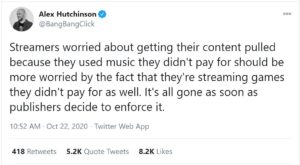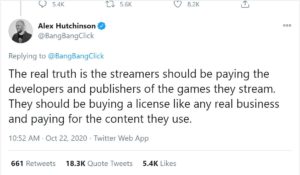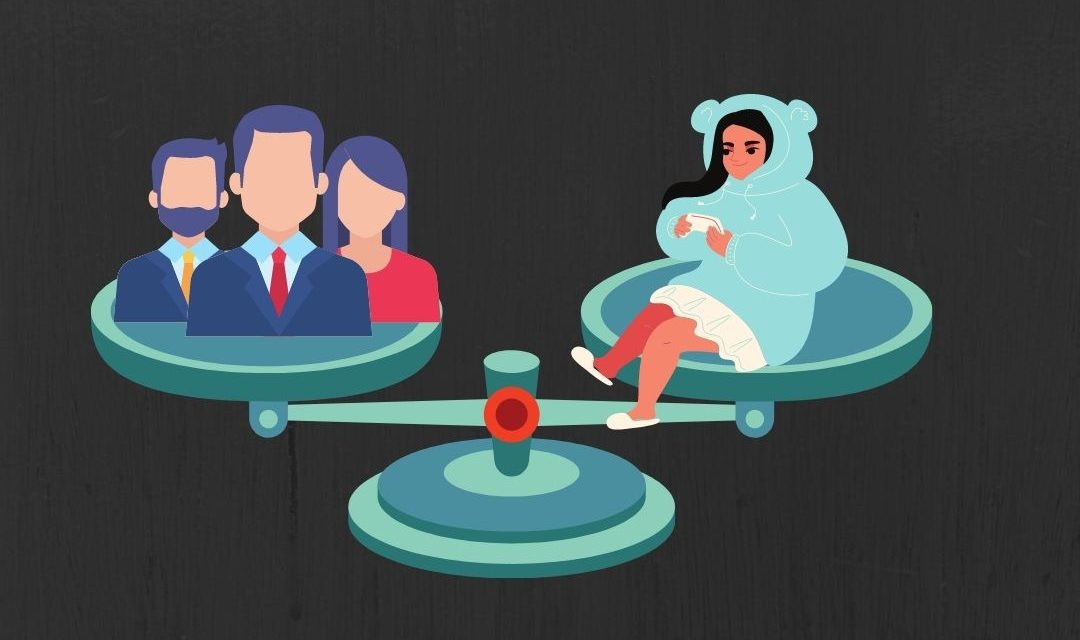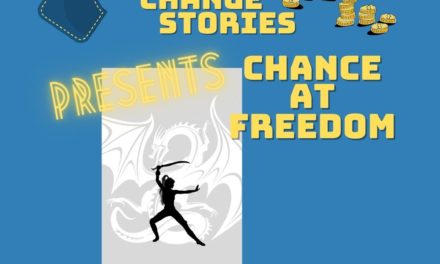I have got to get in on this conversation.
I have so many thoughts on it. I have to share them.
Last week a Creative Director from a Google Acquired Studio struck the internet’s hornet’s nest by saying that Let’s Players and Streamers should buy licenses from Game Developers and Publishers for permission to create content. Predictably this set off many people and had Google rushing to let the collective know that the man did not speak for them and was not THEIR Creative Director for Google Stadia.
This is good because I believe Alex Hutchinson’s tweet showed a fundamental misunderstanding of the ecosystem built up over the last 10 years between Let’s Players and the Gaming Industry.
A Quick History on YouTube, Music, and Copyright:
 Google acquired YouTube in 2006. Before that, the video platform was a lawless land where people shared anything and everything they wanted. That couldn’t last, not for a major player like Google, where people demanded they protect artist rights, especially for music. Thus their infamous copyright algorithm was born. A large discussion around different content came under scrutiny, the three biggest beings:
Google acquired YouTube in 2006. Before that, the video platform was a lawless land where people shared anything and everything they wanted. That couldn’t last, not for a major player like Google, where people demanded they protect artist rights, especially for music. Thus their infamous copyright algorithm was born. A large discussion around different content came under scrutiny, the three biggest beings:
Let’s Plays
Reacts
Reviews
Just when it seemed the livelihood of hundreds of people was about to be upended, the Fair Use Act saved the day while simultaneously complicating things further.
For those not in the know, the Fair Use Act is, as stated by Copyright.gov, “a legal doctrine that promotes freedom of expression by permitting the unlicensed use of copyright-protected works in certain circumstances. Section 107 of the Copyright Act provides the statutory framework for determining whether something is fair use and identifies certain types of uses—such as criticism, comment, news reporting, teaching, scholarship, and research—as examples of activities that may qualify as fair use.”
This is why music on videos, especially those with video games, are always hit with copyright strikes. Music companies gum up the works further by giving no leeway for how their work is used, and that’s okay. Unless they’re randomly sending strikes or claiming work from smaller channels that isn’t theirs, which has been known to happen.
Let’s devel into the ecosystem of Let’s Players and The Game Industry:

I have always found this ecosystem fascinating, especially the relationship between Let’s Players and their fans and how the Game Industry has benefited from the two’s somewhat symbiotic nature.
Let’s Players, Streamers, and Their Fans:
Many say PewdiPie founded let’s Plays in the heydays of YouTube. Since then, it has ballooned into one of the largest categories on YouTube and kickstarted the popularity of Twitch Streaming. At the heart of Let’s Players and Streamers are passionate gamers and people who love to watch others play games.
That’s what’s so fascinating, A gamer being watched by other gamers because they all love games and want to share in the experience. But it doesn’t just stop there, or at the internet personalities that come with some of the top Let’s Player’s like Markiplier and Jacksepticeye, both having 20 million subscribers.
The effort and time Let’s Players put into their channels are mindboggling if you break it down. In the beginning, one Let’s Player I followed posted twice a day, every day for three years straight, interacted with his fanbase on Twitter and YouTube comments daily, and always made a point to at least do one fan read comment video a month. His channel grew from his sheer dedication, and his fans returned that dedication.
It’s this relationship between Let’s Player and Fan that the Game Industry is taping into.
The Benefits of Free Marketing:
I’m going to call it for what it is, free marketing.
That’s why developers and publishers don’t charge Let’s Players and Streamers. That’s why they don’t use they copyright strike system on YouTube. They would cut off one of their most effective marketing channels where they literally have to put little effort into, besides maybe sending a free or early access code.
Let’s be honest here. We loath commercials and will go through some pretty extreme means to never see an ad pop up. Some of us also don’t pay attention to traditional marketing channels, and getting the attention of today’s youth is a shot in the dark. That’s where Let’s Players come in, filling the gap that traditional means can’t meet.
I’d also like to point out a trend that is becoming very popular in marketing and with a brand, and what a lot of consumers seem to be placing a lot of value on, Honest.
Customers want honest reviews and answers. They want to know what they’re getting is good and enjoyable, so if they see their favorite person or someone they’ve connected with enjoying a product they’re interested in, they’re more likely to buy it. Another place Let’s Players just can’t be beaten because they have taken that time to cultivate those relationships with consistent engagement and earnest dedication to their channels.
The Heroes of Indie Games:
Arguably, the biggest benefactors of the Let’s Players and Fan relationship would have to be Indie Developers. When you have zero budget and are building a game with the money you have in your pocket, the attention of a bigtime Streamer can mean all the differences. We have seen this phenomenon happen time and time again over the last 5 years.
I also believe without the growing popularity of Let’s Plays, we would not have seen the boom in indie games that we have seen. Even now, Among Us by Inner Sloth, a game focused on finding an imposter before it kills everyone on a ship, is a perfect example of a small indie game exploding because of Streamers and Let’s Players having taken such a huge liking to it. Another game I enjoyed watching and which succeed thanks to Let’s Players is Subnautica by Unknown Worlds.
This is what I think Mr. Hutchinson failed to realize with his tweet last week. The delicate balance between business and an ecosystem made by gamers. Of course, the internet was quick to school him, and some agreed with him. Though, I also think that there’s a rich history here that’s being missed and why I felt compelled to write this article.
It’s not so black and white. It’s a tangled mess of rules, ideology, and business that I find absolutely fascinating.





